
In my previous blog post, I discussed the wilderness and wildlife of the remote Kuril Islands, but alluded, to in that previous post, the Cold War history, and to a lesser extent these days, World War II History. The abandoned military bases of the Kuril Islands give an amazing insight into our recent past. To be able to visit once top secret and extremely strategic bases in one of the remotest parts of the world is truly a fascinating experience.
 Soviet propaganda featuring Comrade Lenin in the abandoned Kraternyy Naval base on Simushir
Soviet propaganda featuring Comrade Lenin in the abandoned Kraternyy Naval base on SimushirURUP
Compared to the following two islands, the Cold War remnants on Urup, or at least those I was able to see, were limited to a former border guards outpost.
‘
There was a lot of rusting communications equipment decaying in the grass, large watch towers, and significantly reinforced buildings, some of which are being “recycled” by Salmon fishermen, using them as a base during the warmer times for their fishing expeditions.
Urup is the next island in line to the disputed Japanese territories, so I can imagine the strategic significance of a surveillance post on Urup in the Cold War era.
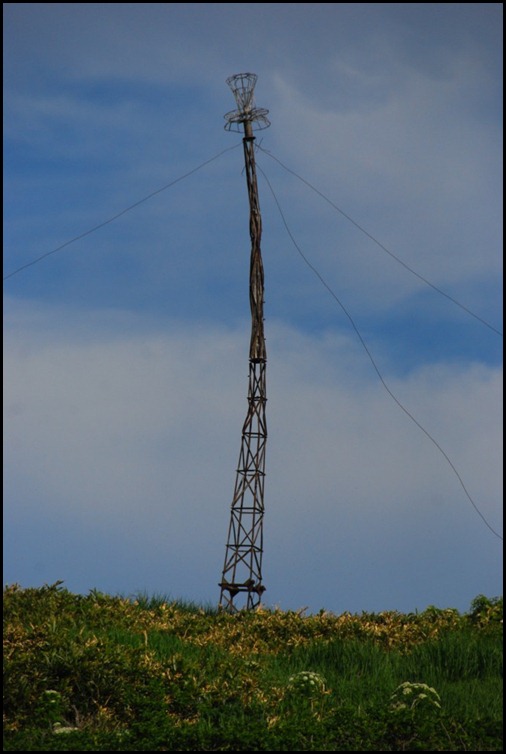 Radio mast at the old Border Guards outpost on Urup
Radio mast at the old Border Guards outpost on Urup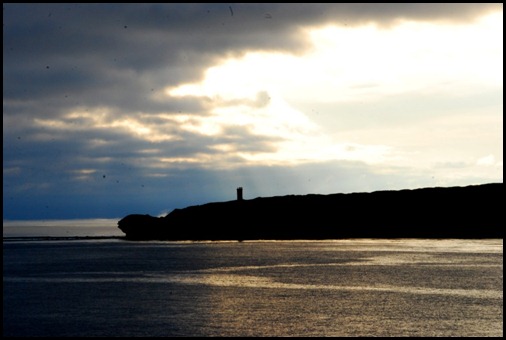 Sunrise over a distant watch tower on Urup
Sunrise over a distant watch tower on Urup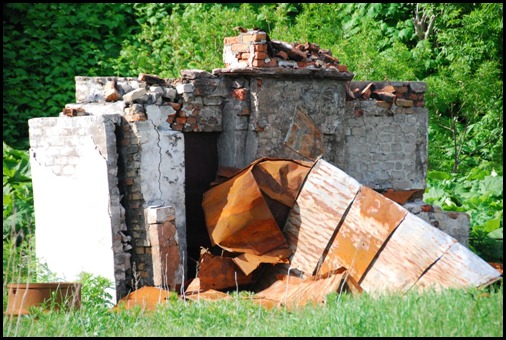 Decaying buildings at the old Border Guard post on Urup
Decaying buildings at the old Border Guard post on Urup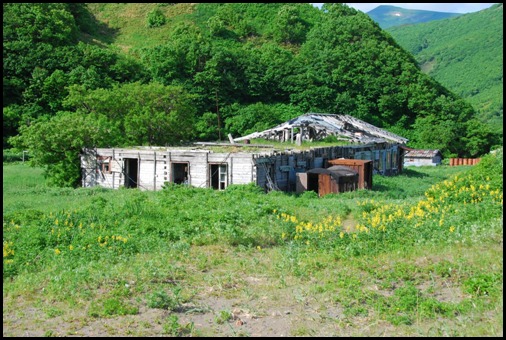 The former Border Guards outpost on Urup
The former Border Guards outpost on Urup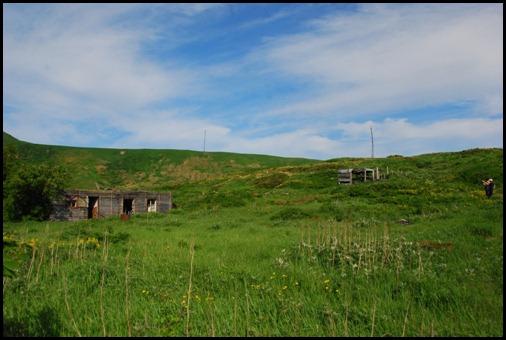 The former Border Guards outpost on Urup
The former Border Guards outpost on Urup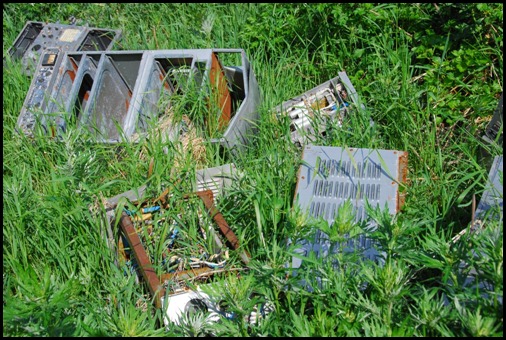 Electronics simply rusting in the grass on Urup
Electronics simply rusting in the grass on UrupMATUA
Matua not only held Cold War relics of significance, but also significant WWII history as well. Several large concrete bunkers from the WWII era can still be found around the island, and the significant runway was constructed by the Japanese originally for use during WWII.
The runway had some quite unique engineering features, built in by the Japanese, such as geothermal vents running under the length of the runway heating the runway to allow it to be ice free through out the year. This feature would have been equally as significant in WWII as it would have ben during the Cold War.
Matua also held dozens of military helmets, most Soviet era, but possibly some from the Japanese in WWII. One of the most interesting finds was a 44 gallon (200 litre) drum with the inscription “Wehrmacht” and the date 1943. One could assume this was a remnant of WWII supply from Germany to their Japanese allies.
The amount of vehicles left on Matua was mind blowing. Tracked vehicles, armoured vehicles, trucks, trailers, electronics filled vehicles, dozens and dozens of them. And the number of empty 44 gallon drums would have been into the thousands., scattered around the island.
Also wandering around Matua it was easy to notice many underground tunnels. The state of them did not really invite deep exploration, but one got the impression there was significant underground installations on the island.
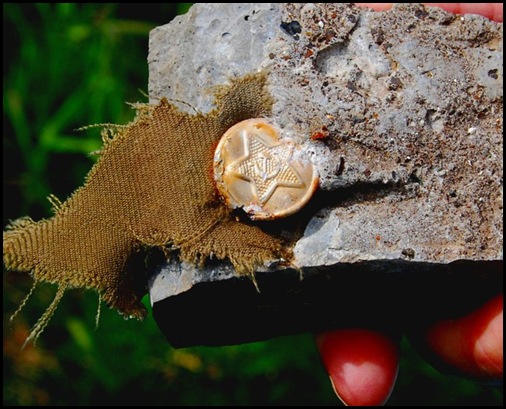 A Soviet tunic button complete with torn fabric oxidised to a piece of concrete, Matua
A Soviet tunic button complete with torn fabric oxidised to a piece of concrete, Matua A decaying tracked utility vehicle, still housed in it’s garage on Matua
A decaying tracked utility vehicle, still housed in it’s garage on Matua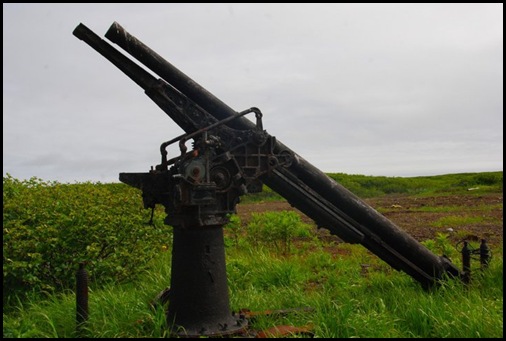 A Japanese WWII Era Anti-Aircraft Gun remains to this day at the base on Matua
A Japanese WWII Era Anti-Aircraft Gun remains to this day at the base on Matua The vehicle graveyard on Matua was significant
The vehicle graveyard on Matua was significant  Numerous command and control type trailers, filled with decaying electrical and electronic equipment filled the vehicle graveyard
Numerous command and control type trailers, filled with decaying electrical and electronic equipment filled the vehicle graveyard 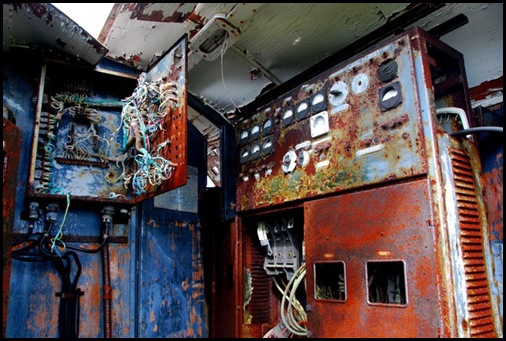 Numerous command and control type trailers, filled with decaying electrical and electronic equipment filled the vehicle graveyard
Numerous command and control type trailers, filled with decaying electrical and electronic equipment filled the vehicle graveyard 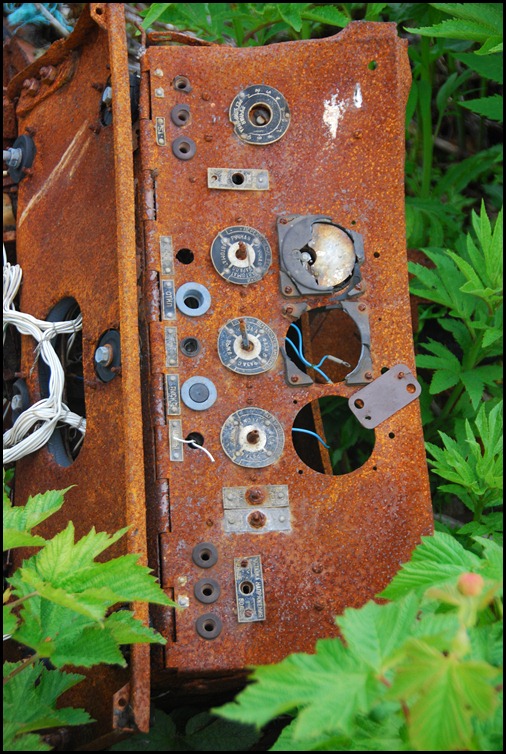 As seen on Urup, there was plenty of electronics equipment strewn around Matua as well
As seen on Urup, there was plenty of electronics equipment strewn around Matua as well Significant Radar stations and associated equipment sit abandoned across the island
Significant Radar stations and associated equipment sit abandoned across the island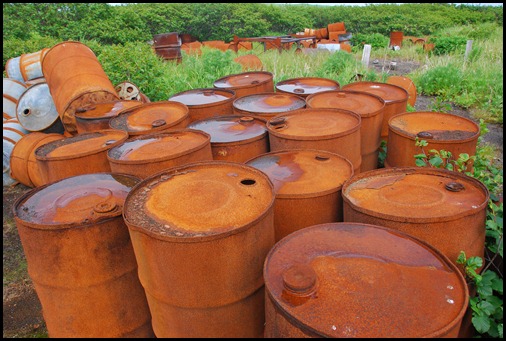 Empty 44 Gallon Drums numbered in the thousands
Empty 44 Gallon Drums numbered in the thousands One of the many “solid” buildings on the island
One of the many “solid” buildings on the island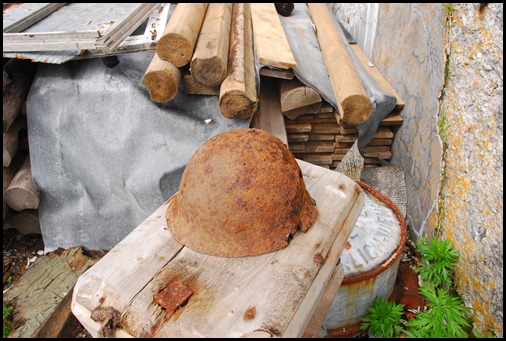 Many military helmets were scattered around the island. I would argue they were all Soviet era, however others speculate there were some WWII Japanese helmets amongst them
Many military helmets were scattered around the island. I would argue they were all Soviet era, however others speculate there were some WWII Japanese helmets amongst them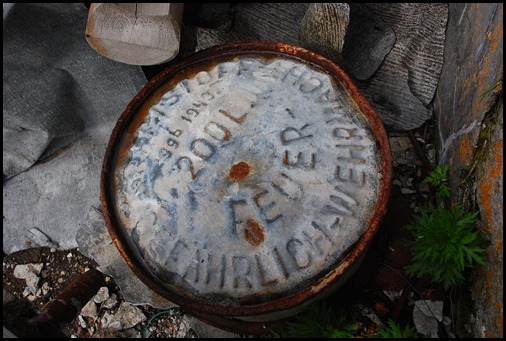 This 44 Gallon Drum was particularly interesting, containing the inscription Wehrmacht and the date 1943. One could assume that it was left over from WWII supplies from Germany to their Japanese allies.
This 44 Gallon Drum was particularly interesting, containing the inscription Wehrmacht and the date 1943. One could assume that it was left over from WWII supplies from Germany to their Japanese allies. Another heavily reinforced concrete building, which was connected to significant underground tunnels
Another heavily reinforced concrete building, which was connected to significant underground tunnels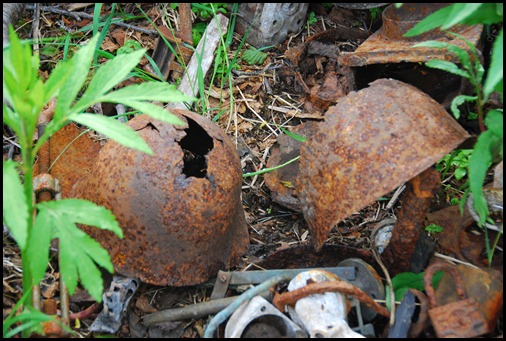 Many military helmets were scattered around the island. I would argue they were all Soviet era, however others speculate there were some WWII Japanese helmets amongst them
Many military helmets were scattered around the island. I would argue they were all Soviet era, however others speculate there were some WWII Japanese helmets amongst them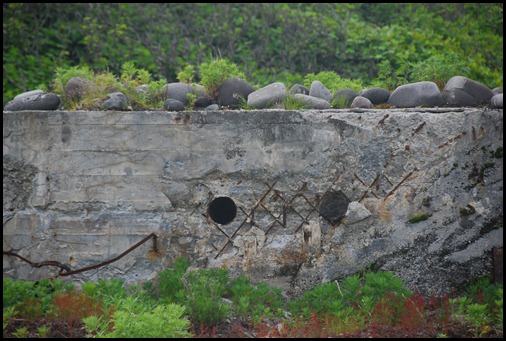 Japanese WWII era concrete defence bunkers still line the foreshore of Matua
Japanese WWII era concrete defence bunkers still line the foreshore of Matua Japanese WWII era concrete defence bunkers still line the foreshore of Matua
Japanese WWII era concrete defence bunkers still line the foreshore of MatuaSIMUSHIR
Out of three Cold War islands I was able to visit, SImushir was by far the most dramatic, interesting and fascinating. The island is essentially a series of four volcanic cones, with the northern one being a flooded caldera. In a situation reminiscent of the best Cold War James Bond movie, the soviets blasted an entrance channel into the caldera so Submarines and other vessels could access the base. And in a sign of the modern digital age we live in I was able to locate a picture of the actual blasting to make the entrance taking place (see below © All Rights Reserved by Sergey Nogovitsyn ).
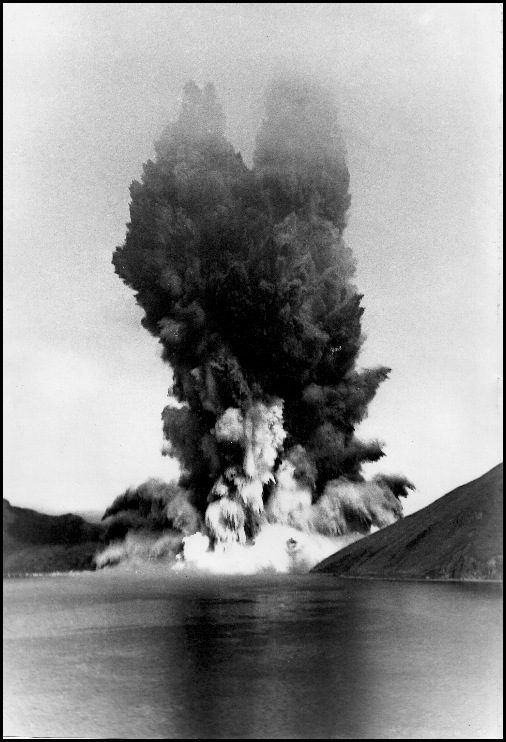 In a sign of the times of this age of modern digital communication, I came across an original photo of the construction of the secret base, including this shot of the blasting of the entrance into the caldera © All Rights Reserved by Sergey Nogovitsyn
In a sign of the times of this age of modern digital communication, I came across an original photo of the construction of the secret base, including this shot of the blasting of the entrance into the caldera © All Rights Reserved by Sergey Nogovitsyn This NASA pic of Simushir, shows the four volcanic peaks in a line, with the final northern most caldera being the home of the Kraternyy Naval Base (NASA/Wikipedia)
This NASA pic of Simushir, shows the four volcanic peaks in a line, with the final northern most caldera being the home of the Kraternyy Naval Base (NASA/Wikipedia) A topographic map showing the northern Caldera and Broutana Bay (Map from my friend Wayne Brown at Ocean Adventures)
A topographic map showing the northern Caldera and Broutana Bay (Map from my friend Wayne Brown at Ocean Adventures)Construction of the base started in 1978, and went on to eventually house over 3000 people in the base town of Kraternyy. It’s no doubt given the era, and the fact it was constructed inside a volcanic caldera on an extremely remote island, that the base was “top secret”. However it’s quite ironic that abandoned as it is today, there is a sign on the hill naming the base and listing the units that were based there. Reminds me sort of like the bat cave, secret but everything labelled!
A declassified US Navy report I located on line described the base as having the role of using its submarines to lay sea mines across the lines of supply in Northern Japan and around the Kurils in the event of outbreak of hostilities. There was also reportedly radar and electronic reconnaissance equipment for surveillance on the island as well.
The following report was disseminated by the Reuters news agency in 1982, when the presence of this base became public knowledge.
Russians Said to Have Built Submarine Base Near Japan
Reuters
Published: October 24, 1982
TOKYO, Oct. 23— The Soviet Union has deployed attack type conventional submarines at a new base in the Kurile Islands in the north western Pacific, a Japanese newspaper reported today.The mass-circulation Yomiuri Shimbun quoted Japanese and American Government sources as saying that the submarine base had been built at the northern tip of Simushir Island, about 250 miles northeast of Japan's main northern island of Hokkaido.
 Early days of the base under construction © All Rights Reserved by Sergey Nogovitsyn
Early days of the base under construction © All Rights Reserved by Sergey Nogovitsyn
One could spend days or weeks wandering around this former town base. With numerous buildings, installations and facilities all pretty much left as they were at the end of the cold war. Nuclear Chemical and Biological warfare suits lay tossed around rooms. Once secret code rooms lay open to those who can get to the island. Kitchens, bathrooms, laundry rooms, gun racks, sleeping quarters, sports rooms, lecture halls, movie theatres, all just left to decay in time. Charts lay on tables, maps line walls, book shelves filled with once relevant military information lie exposed to the elements through broken windows and rotting infrastructure.
Exploring deep enough you can find secret stair cases to hidden rooms, some accessed through narrow passages with gun ports either side, that in its operational time would have allowed only authorised entry through threat of instant death to those who should not enter. In one such area I found an interesting curiosity, in one cupboard I chose to open, out of many that I could have, was a CIA sticker! A kind of tourist sticker from CIA headquarters in Virginia. Whilst it looked like it had been there a long time, it could also have ben placed there more recently as a kind of joke. It did make me think it had ben there since the Soviet days as there were several other “western” stickers located nearby including a Mars Bar sticker. Being this was in the secret part of the building through hidden entrances, one could speculate this was a KGB or Military Intelligence (GRU) area of the complex.
 Kraternyy Naval Base, Simushir
Kraternyy Naval Base, Simushir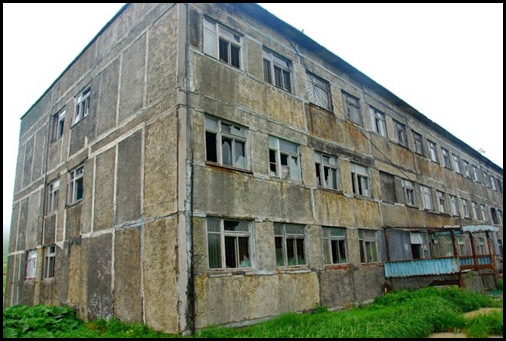 Kraternyy Base, Simushir
Kraternyy Base, Simushir Electronics inside on the buildings
Electronics inside on the buildings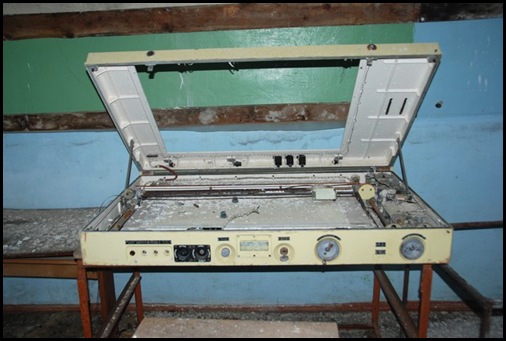 Equipment inside the base
Equipment inside the base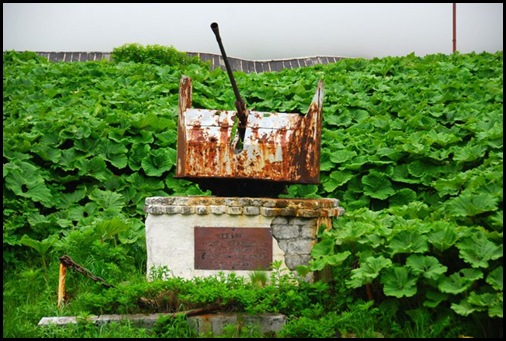 An old Soviet Naval gun mount stands as a monument at Kraternyy Base
An old Soviet Naval gun mount stands as a monument at Kraternyy Base NBC Warfare suits lay scattered everywhere
NBC Warfare suits lay scattered everywhere 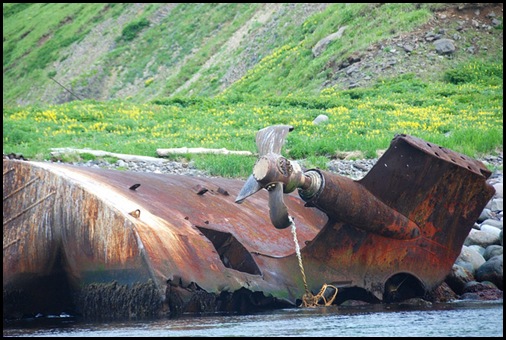 A former Soviet Submarine Tender that didn’t quite make it through the narrow entrance to the caldera during bad weather
A former Soviet Submarine Tender that didn’t quite make it through the narrow entrance to the caldera during bad weather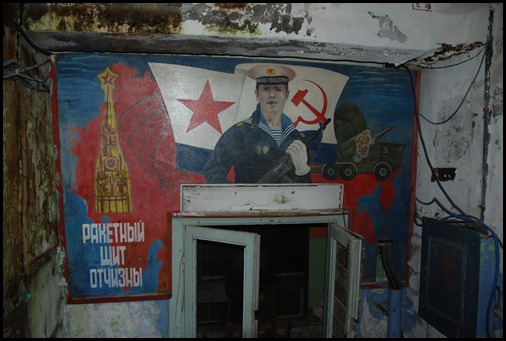 Soviet propaganda covered many of the walls
Soviet propaganda covered many of the walls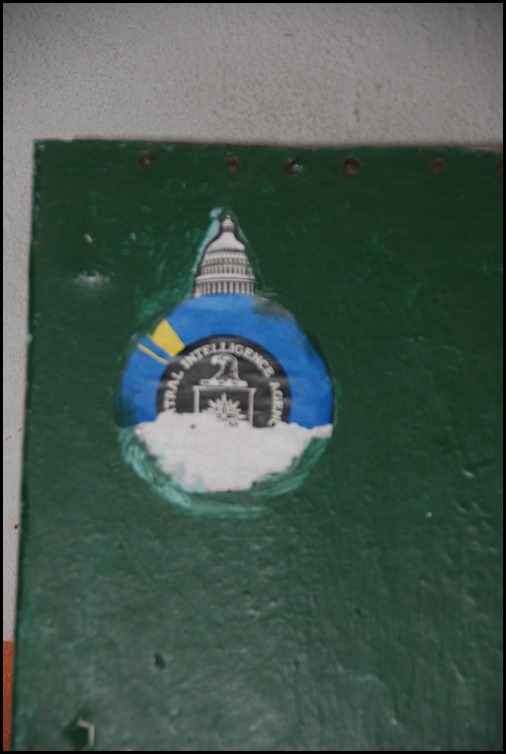 I found this CIA sticker inside a cupboard on the base!
I found this CIA sticker inside a cupboard on the base!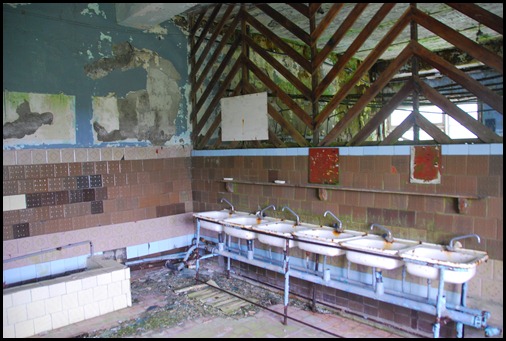 Inside the base
Inside the base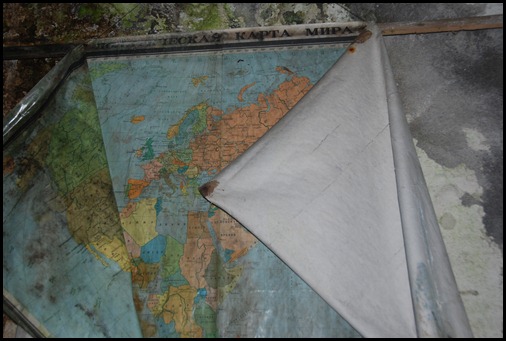 Maps and charts were hung on walls and scattered on tables
Maps and charts were hung on walls and scattered on tables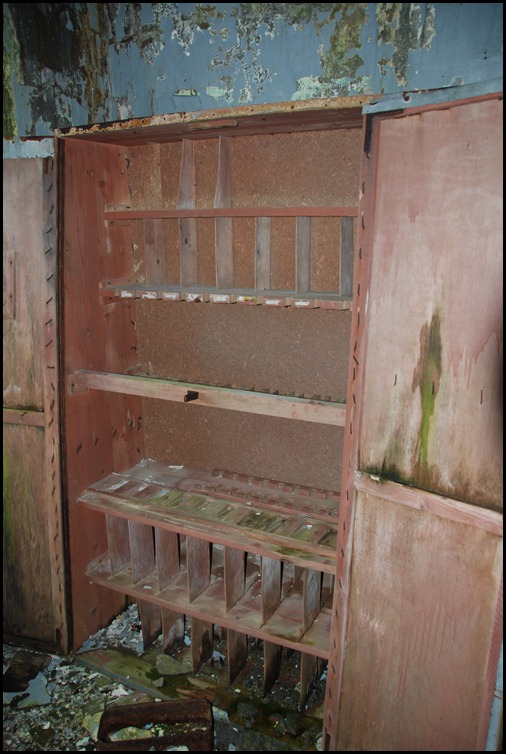 Several rooms were filled with gun racks
Several rooms were filled with gun racks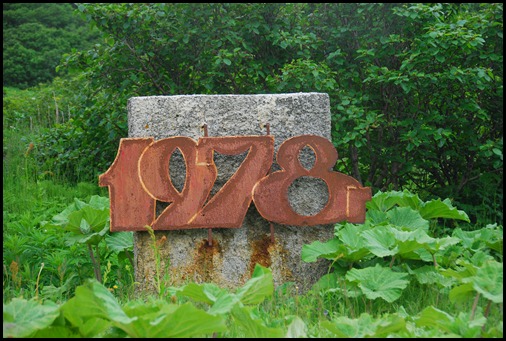 A sign shows 1978, the year construction began on the base
A sign shows 1978, the year construction began on the base The irony of a top secret base, with a large sign on the hill declaring it’s name
The irony of a top secret base, with a large sign on the hill declaring it’s name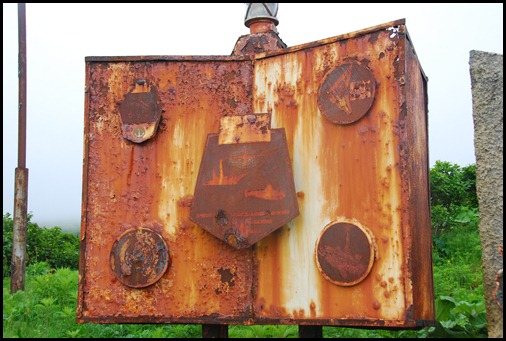 And a further sign listing the units that were stationed there!
And a further sign listing the units that were stationed there!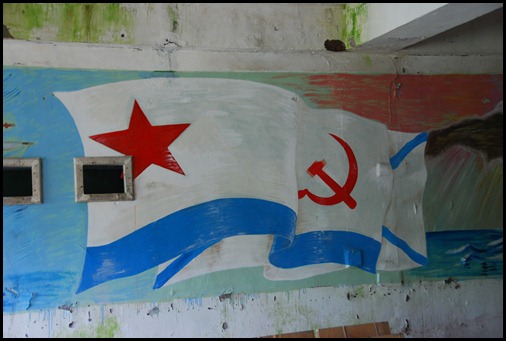 The Soviet Naval Ensign, overlapping the then former Russian Naval Ensign, which since the fall of the Soviet Union is once again the flag of the Russian Fleet
The Soviet Naval Ensign, overlapping the then former Russian Naval Ensign, which since the fall of the Soviet Union is once again the flag of the Russian Fleet
To be able to wander freely through this once great military base, to see the significant infrastructure abandoned, to see the equipment left behind was an amazing experience. Knowing the strategic significance of this area still today, it would not surprise me if one day in the future we once again see the militarisation of the Kurils.
As my comrade Huckorivitch would say; nazdarovya!
PART ONE: Russian Far East: Kuril Island Wilderness

So you want to visit the Kurils?
- being so remote and without airfields on al but the disputed islands next to Japan, the only way in is by ship.
- several expedition cruise companies offer expeditions through the Kurils in the warmer ice free months of the year, departing either from Kamchatka or Hokkaido normally.
- other than that its very difficult and expensive to get to these remote and unique islands
del.icio.us Tags: soviet,russian far east,kurils,cold war,asia,WWII,world war two,japanese,soviet navy,submarine,mine laying,border guard,kruriles,urup,matua,simushir,broutana,kraternyy,caldera,secret,GlobalCitizen01
Flickr Tags: soviet,russian far east,kurils,cold war,asia,WWII,world war two,japanese,soviet navy,submarine,mine laying,border guard,kruriles,urup,matua,simushir,broutana,kraternyy,caldera,secret,GlobalCitizen01
Technorati Tags: soviet,russian far east,kurils,cold war,asia,WWII,world war two,japanese,soviet navy,submarine,mine laying,border guard,kruriles,urup,matua,simushir,broutana,kraternyy,caldera,secret,GlobalCitizen01

Hi Justin,
ReplyDeleteInteresting, do you think US military bases will look like this soon?
The island of Matua - interesting name - very Austronesian. It means parent. There is no doubt that Austronesians did spread up that way on their way across to America and down into the Pacific. Just what relics remain is yet to be seen.
We have found that Tongas in Haida and Tlingit means south - as it Tonga means south in the Pacific. Kuna means leeward side of island in Haida. Kona means leeward side in Hawaiian - Kane is a Polynesian Ancestral figure/god Ikane is a Tlingit ancestral figure. Gwaii and Hawaii both mean homeland. Kahiko and Kaliko were the same too. So there are relics of the language that once existed up there 2,000 years ago. Concurring with the Hawaiian legend of a harrowing voyage across the arctic ocean.
Regards Peter
Hey Pete. In this case "Matua" is a derivation from the Ainu word meaning "hell mouth", so not quite "mother" ;)
ReplyDeleteCheers
Justin